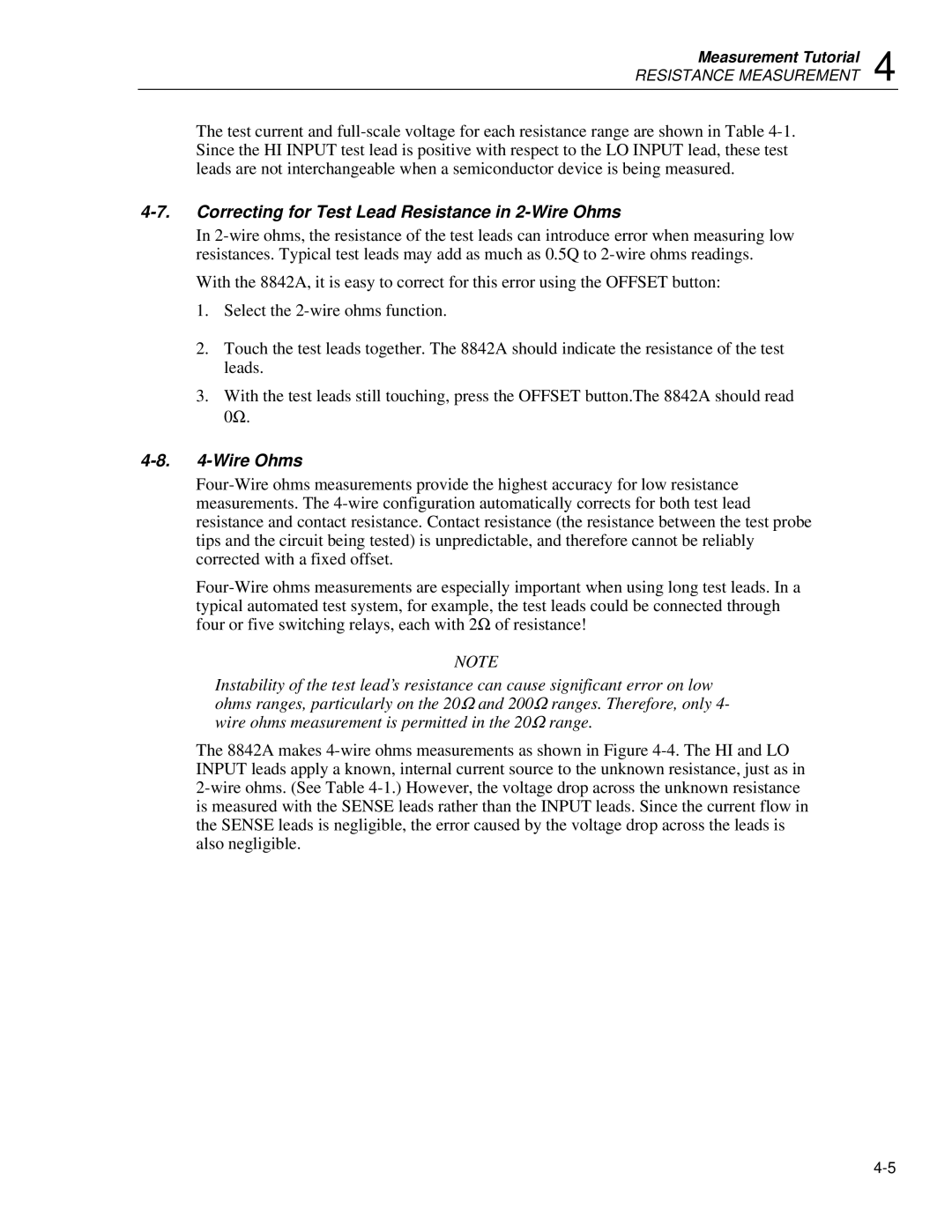Measurement Tutorial 4
RESISTANCE MEASUREMENT
The test current and full-scale voltage for each resistance range are shown in Table 4-1. Since the HI INPUT test lead is positive with respect to the LO INPUT lead, these test leads are not interchangeable when a semiconductor device is being measured.
4-7. Correcting for Test Lead Resistance in 2-Wire Ohms
In 2-wire ohms, the resistance of the test leads can introduce error when measuring low resistances. Typical test leads may add as much as 0.5Q to 2-wire ohms readings.
With the 8842A, it is easy to correct for this error using the OFFSET button:
1.Select the 2-wire ohms function.
2.Touch the test leads together. The 8842A should indicate the resistance of the test leads.
3.With the test leads still touching, press the OFFSET button.The 8842A should read 0Ω.
4-8. 4-Wire Ohms
Four-Wire ohms measurements provide the highest accuracy for low resistance measurements. The 4-wire configuration automatically corrects for both test lead resistance and contact resistance. Contact resistance (the resistance between the test probe tips and the circuit being tested) is unpredictable, and therefore cannot be reliably corrected with a fixed offset.
Four-Wire ohms measurements are especially important when using long test leads. In a typical automated test system, for example, the test leads could be connected through four or five switching relays, each with 2Ω of resistance!
NOTE
Instability of the test lead’s resistance can cause significant error on low ohms ranges, particularly on the 20Ω and 200Ω ranges. Therefore, only 4- wire ohms measurement is permitted in the 20Ω range.
The 8842A makes 4-wire ohms measurements as shown in Figure 4-4. The HI and LO INPUT leads apply a known, internal current source to the unknown resistance, just as in 2-wire ohms. (See Table 4-1.) However, the voltage drop across the unknown resistance is measured with the SENSE leads rather than the INPUT leads. Since the current flow in the SENSE leads is negligible, the error caused by the voltage drop across the leads is also negligible.
